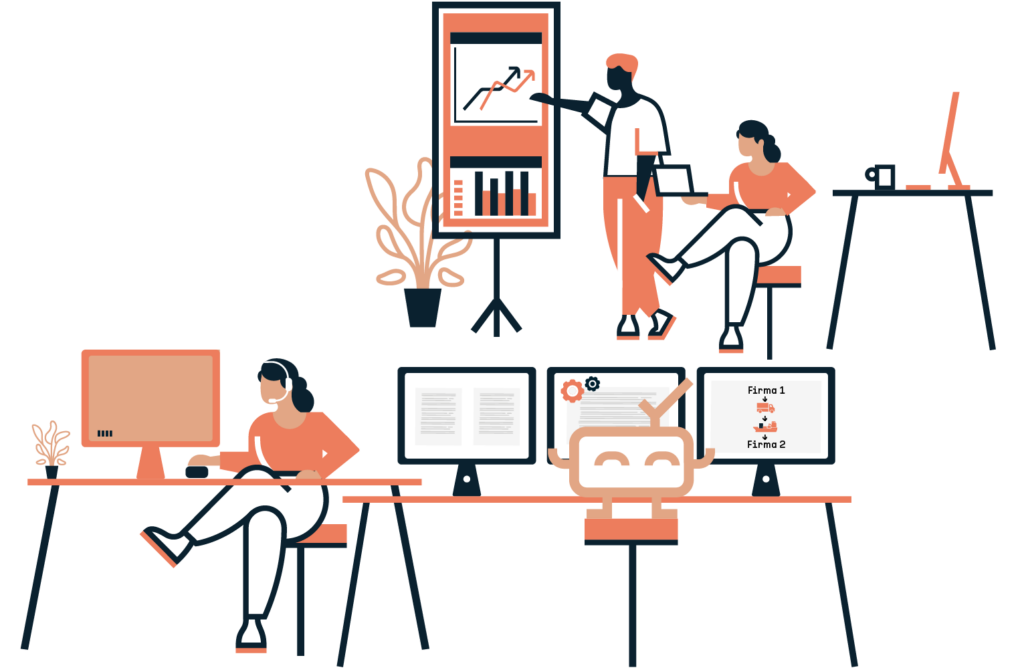In order to remain competitive in the wake of growing digitalisation and globalisation, logisticians must adapt to the changing times. New business models are challenging previous systems, there is a substantial shortage of skilled workers, product cycles have to be shortened and demand is fluctuating. In addition, rising competition is increasing the pressure on prices and competition, and customers not only demand immediate and inexpensive delivery of their orders, but also want to stay informed about the current status of their shipment at all times.
RPA makes all the difference in a competitive market like logistics and creates a clear competitive advantage. Through process automation, logisticians have the necessary resources to enable high efficiency, fast responsiveness and low operational costs.

Many documents play an important role in the declaration of goods at customs: invoices, packing lists, accompanying documents. These contain very specific data that is often subject to a high degree of complexity and must be put into context. When entering the data, (typing) errors can quickly occur, which exponentially lengthens the entire customs clearance process. This not only leads to high costs at the port, among other places, but also to customer dissatisfaction, as the goods cannot be delivered to the recipient on time.
The software robot’s mode of operation eliminates data entry errors. In addition, processing can already be carried out overnight, so that a final check can take place right in the morning. Waiting times in the customs clearance process are reduced to a minimum and supply chains can be maintained without interruption.

Many medical facilities use a central system for operations, but this often does not cover the requirements of the different areas and is incompatible, especially in case of specific treatments. Therefore, many employees wish to use subsystems. However, in order to connect these to the central system, an interface is required, which is time-consuming, cost-intensive and in some cases not even feasible. As a result, facilities either work entirely without subsystems or employees have to document data twice.
With the help of Robotic Process Automation, the patient data is extracted and imported from the individual systems, i.e. both the central system and the subsystems, without using an interface. This is done either via the user interface (GUI) or using the HL7-format.

To provide customers with a plug-and-play experience for POS (Point of Sale) terminals, vendors must define the client’s details and desired configuration. This process step is often carried out manually by the employees. In the course of digitalisation and global pandemic, the demand for terminals is increasing, as contactless payment is becoming more important. A fast and efficient configuration process is therefore essential to prepare as many terminals as possible per day.
Robotic Process Automation can be used to optimise terminal configuration. Our robots use the terminal software for configuration, entering new customers with all the information on bank details, transaction fee and address quickly and without errors. They then create the terminal and configure it individually.

